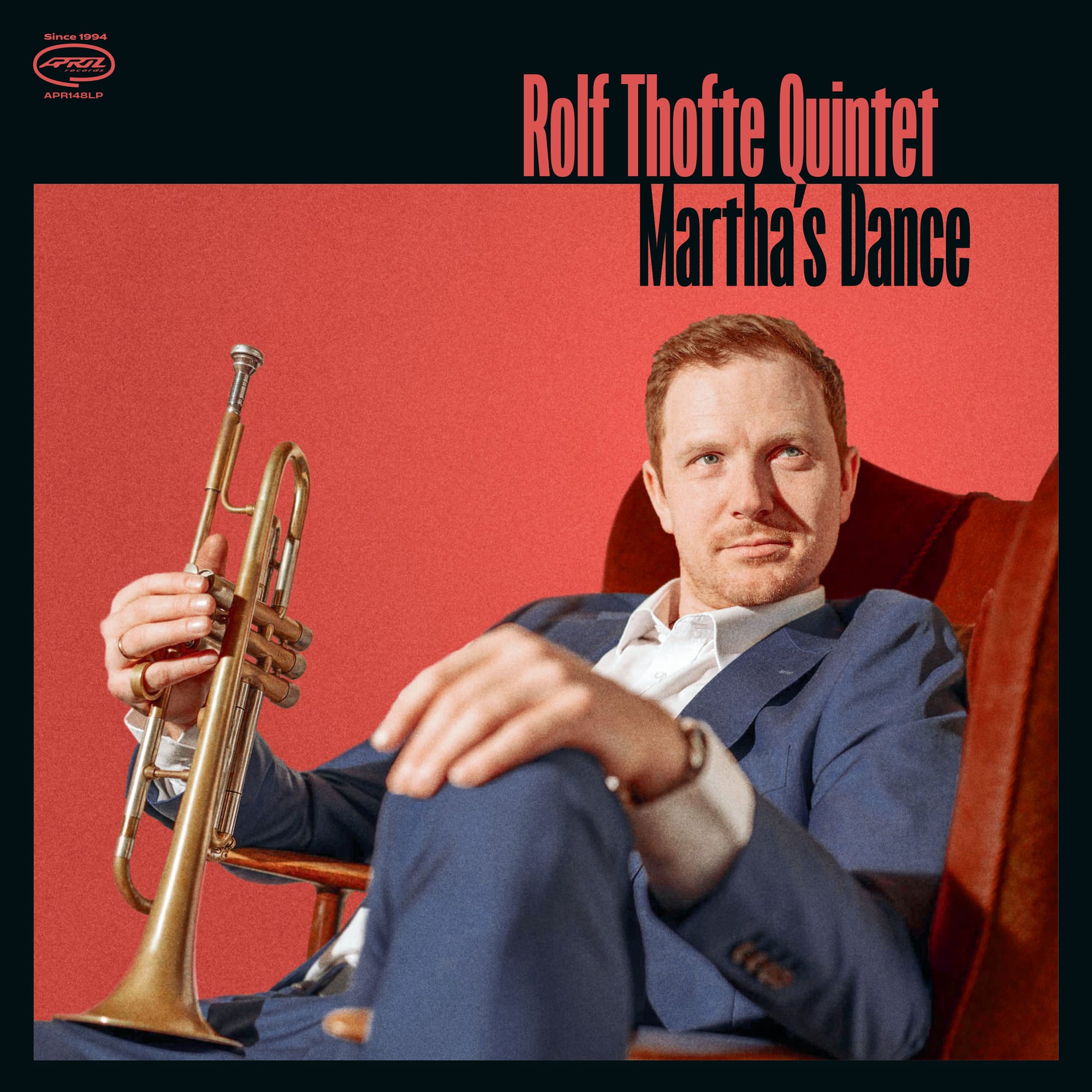Rolf Thofte: Martha’s Dance ignites the Danish jazz scene

Existence is made up of fragments that vanish in the blink of an eye. It's in these volatile scenes, where words fail, that the echo of his trumpet emerges—as in the moment a tune sounds and baby Martha smiles. These fleeting and unrepeatable situations don't just inspire; they are the spark that ignites this jazz. The ephemeral daily actions become a shared song: a collective dialogue among improvisers in music and in life.

After several years of shaping his sound in ensembles and live shows, Rolf Thofte has released his debut album, Martha's Dance: a collection of personal experiences translated into sound. The album is more than just a collection of songs; it is a statement from an artist who will undoubtedly attract attention in the Danish jazz scene. In our conversation, he shared some of his philosophy: “An interesting aspect of playing music, especially instrumental music, is the communication involved. When you can play an instrument, you can communicate more directly, leaving behind the words.” His inspiration, he explained, is deeply felt. “Sometimes, inspiration comes from an idea, but it’s more like the emotions I experience in my life, rather than specific material concepts,” he said. “I don’t have an agenda within my music; it’s an attempt to convey all the emotions I experience in life.”
Behind the album's title, the music evokes a joyful dance—but above all, it hides a father's intimate memory. "Martha is my daughter, and she's almost four now. When I wrote the tune, she was about two years old. She's always been happy about music; every time I put something on, she would dance and smile," he shares. "The song and album title are meant to evoke that wonderful image of her." This cherished scene, once perceptible only to his eyes, has been brought to life by his quintet. The ensemble features Andreas Toftemark on tenor saxophone, Rasmus Sørensen on piano, Henrik Holst on drums, and Jakob Roland on bass."
Through the album's seven songs, Thofte crafted a broad emotional palette. He explains that his initial selection of tunes was too melancholic, so he made specific adjustments to achieve balance. "I wanted to brighten things up. As a musician, you should present an image of who you are, and while melancholy is part of me, it's not everything," he continued. "Through music, you can convey every aspect of human life. I wanted to bring in both some joy and sadness." This approach resulted in a broad palette of colors that reveals the internal dialogue between him and his trumpet.
Martha's Dance exists in a context where Denmark's jazz landscape is at its prime. To stand out, Rolf decided to forfeit control. He explains that a crucial method for this album was bringing unfinished ideas to the band. "I haven't forced myself to finish everything; I just brought stuff to the band. A bass player is sometimes better at coming up with a bass line than I am," he shared. This trust in his quintet allows the music to develop organically. "I give them a few directions, and we start playing. If it works, we keep it," he added. "I like to use the strengths of the musicians rather than trying to control everything myself."
April Records is a really cool label. They release some of the best albums from Danish jazz artists. Being part of his catalog, my music will extend an audience it wouldn't have reached otherwise. I'm honored to be part of this family
While the album’s atmosphere can evoke images like a city in dark doldrums, its core is defined by the spontaneous conversations that happen through improvisation. 'Improvisation is a really fascinating thing,' he states. 'It's like talking. You have to know a lot about harmony and rhythm, but at the end, if you know what you're talking about and you know the person you're talking to, it's very easy to communicate. You don't think about the grammar. It's the same thing when improvising on your instrument. I really like it when it's possible to let go and talk together on our instruments.
The band's ability to create a sense of gradual, almost unnoticed, change is central to the album's sound. Thofte explains this concept in relation to the track Changing Tides:
"The title 'Changing Tides' is an older idea. The tides are a powerful force, but when you're standing on the beach, you don't see the water moving. If you were to close your eyes and open them two hours later, you might have wet feet. Big changes occur without you really noticing them. Many things happen like this, whether in a relationship or political life: things happen gradually, and then all of a sudden, everything is different. The way this unfolds in the music is that we make many abrupt key changes. The song modulates all the time, but because there are a lot of common notes, you don't really notice that something drastic has just happened. It happens under our noses."
This subtle yet profound musical strategy reflects Thofte's belief that deep shifts often occur beneath the surface of our awareness.
Martha's Dance marks the culmination of a musical evolution, born from a period of introspection between the stages, classrooms, and personal life. With this album, Rolf Thofte isn't just launching his first project—he is igniting the Danish jazz conversation.